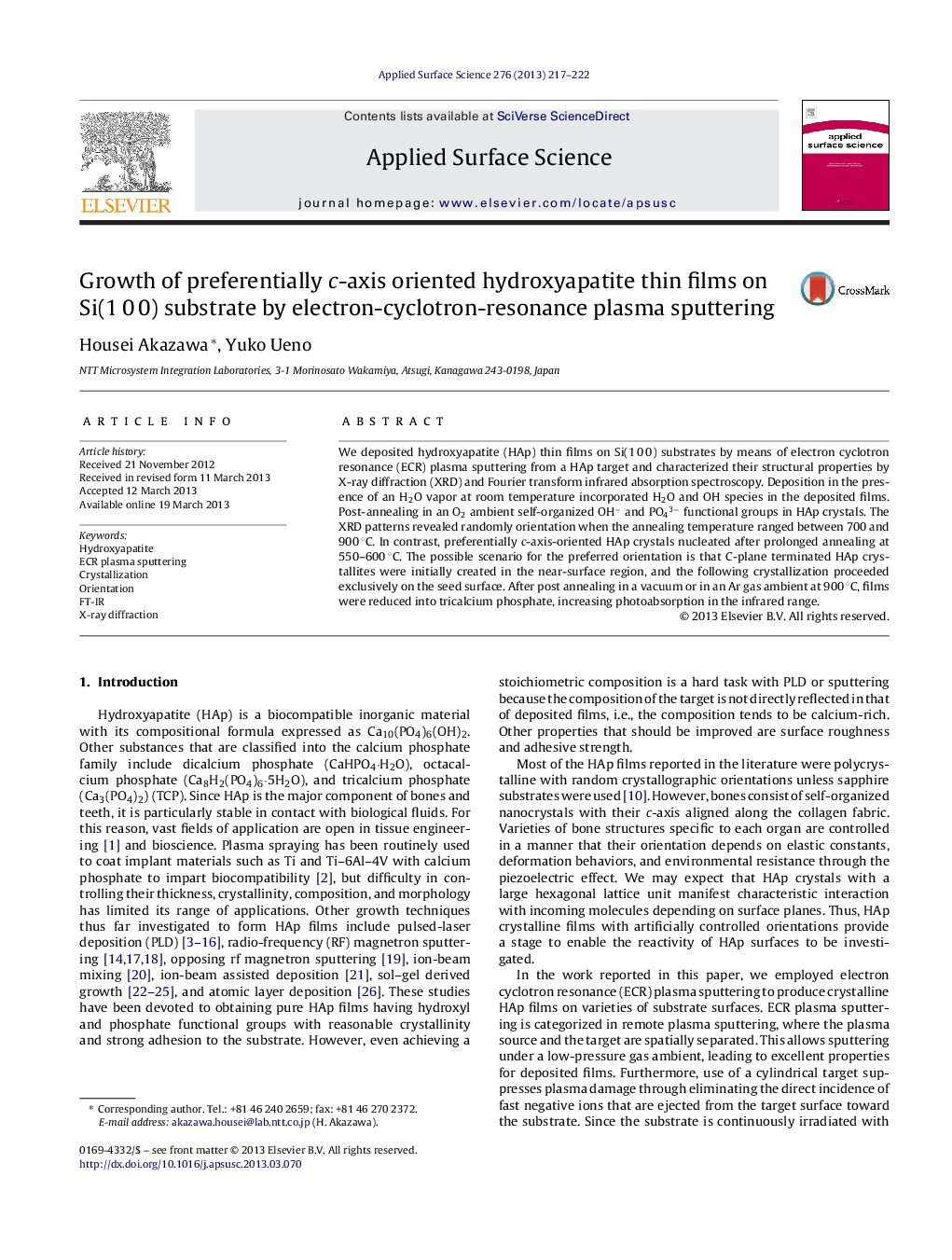| Article ID | Journal | Published Year | Pages | File Type |
|---|---|---|---|---|
| 5360070 | Applied Surface Science | 2013 | 6 Pages |
Abstract
We deposited hydroxyapatite (HAp) thin films on Si(1 0 0) substrates by means of electron cyclotron resonance (ECR) plasma sputtering from a HAp target and characterized their structural properties by X-ray diffraction (XRD) and Fourier transform infrared absorption spectroscopy. Deposition in the presence of an H2O vapor at room temperature incorporated H2O and OH species in the deposited films. Post-annealing in an O2 ambient self-organized OHâ and PO43â functional groups in HAp crystals. The XRD patterns revealed randomly orientation when the annealing temperature ranged between 700 and 900 °C. In contrast, preferentially c-axis-oriented HAp crystals nucleated after prolonged annealing at 550-600 °C. The possible scenario for the preferred orientation is that C-plane terminated HAp crystallites were initially created in the near-surface region, and the following crystallization proceeded exclusively on the seed surface. After post annealing in a vacuum or in an Ar gas ambient at 900 °C, films were reduced into tricalcium phosphate, increasing photoabsorption in the infrared range.
Related Topics
Physical Sciences and Engineering
Chemistry
Physical and Theoretical Chemistry
Authors
Housei Akazawa, Yuko Ueno,
